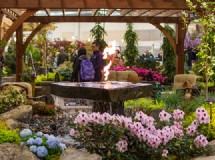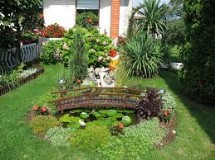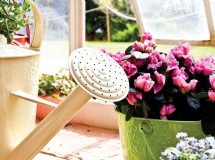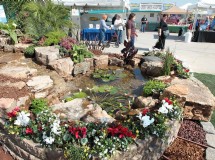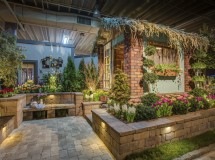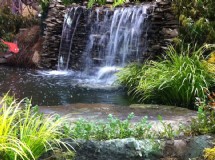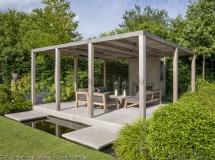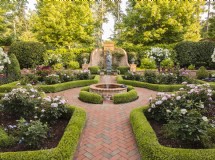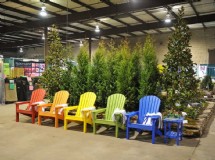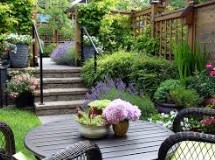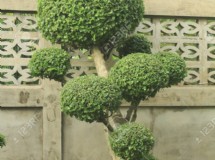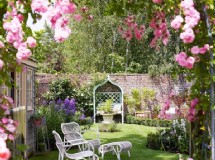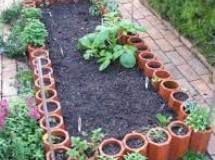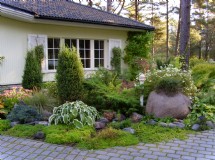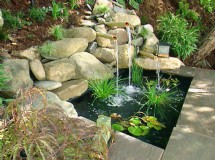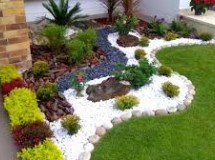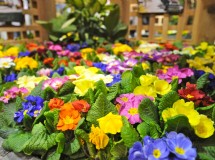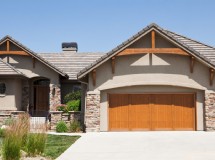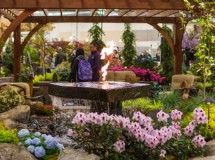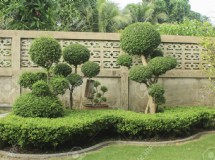- Pilings hold up this building.Cordova Cannery image by Robert Ulph from Fotolia.com
Foundation piles are groups of cylindrical or flat sections of wood, steel or concrete that are driven into soil to form part of a foundation. They are used when the soil near the surface is too weak to support the weight of the structure or building. Piles transfer this structural load to deeper soil or rock that is better able to carry the weight. Piles are classified depending on how they carry the structural load. - Typically timber piles are tree trunks that are trimmed of branches and bark and that have no bends, large knots, splits or decay and are uniform from end to end. Timber piles are the cheapest types of foundation piles but have a lower load bearing capacity than steel or concrete and may not be suitable for areas where they are exposed to seasonal elements.
- Concrete piles may be of two types. Pre-cast concrete piles are pre-made using reinforced or pre-stressed concrete. They have a high load-bearing capacity but longer piles are difficult to transport and they're difficult to cut to a specific length.
Cast-in-place concrete piles are made by driving a cylindrical shell into the ground to the desired depth and then filling the shell with liquid concrete. The shell doesn't contribute to load bearing capacity but provides a hole in order to make the concrete pile. These are preferred, as builders can form any length and depth and it isn't necessary to transport them. However, conditions must be favorable as the concrete must be able to harden in the form. - Steel piles come in various shapes and sizes but are usually rolled steel sections of seamless pipes that can be welded to lengths of up to 70 meters. Steel piles are treated before being placed as corrosion may be an issue. They are typically embedded into the soil with open ends and can be placed into hard surfaces such as boulders or rock beds.
- Composite piles are made of one material in the bottom section and another in the top section. The materials used depend on the weight of the structural load. A composite pile made of wood and concrete, for example, is used to support loads of 20 to 30 tons. One made of steel and concrete is used to support loads up to 50 tons.
- Sheet piles are specially shaped interlocking piles made of steel, wood or formed concrete that are used to make a continuous wall that resists horizontal pressures from earth or water loads.
- Driven vertically into the ground, bearing piles are used for the direct support of vertical loads, which they distribute through fairly soft soils that aren't able to support concentrated loads.
- End-bearing piles are driven through very soft soil, and they come to an end in hard, somewhat impenetrable material such as rock or dense gravel. Their carrying capacity comes from the resistance of the bottom layer of the pile.
- A friction pile is a pile that is driven into soil that is relatively uniform, but the tip of the pile is not settled into a hard layer. The weight of the structure is transferred downward and laterally by the friction between the pile and the surrounding soil.
- A pile might pass through soft soil that gives some frictional resistance, but then go into a denser layer that has a better load-bearing capacity. In this case, these piles carry loads by a combination of end-bearing and friction.
- Piles that are driven into the ground at an angle with vertical piles are called batter piles. When the foundation material fails to stop sideways movement of the vertical piles, batter piles will help bear the load. Batter piles are also used if the soil is compressible, in order to spread vertical loads over a larger area. Batter piles can be used alone (placed in opposite directions) as well.
Timber Piles
Concrete Piles
Steel Piles
Composite Piles
Sheet Piles
Bearing Piles
End-Bearing Piles
Friction Piles
Combination End-Bearing and Friction Piles.
Batter Piles
SHARE

